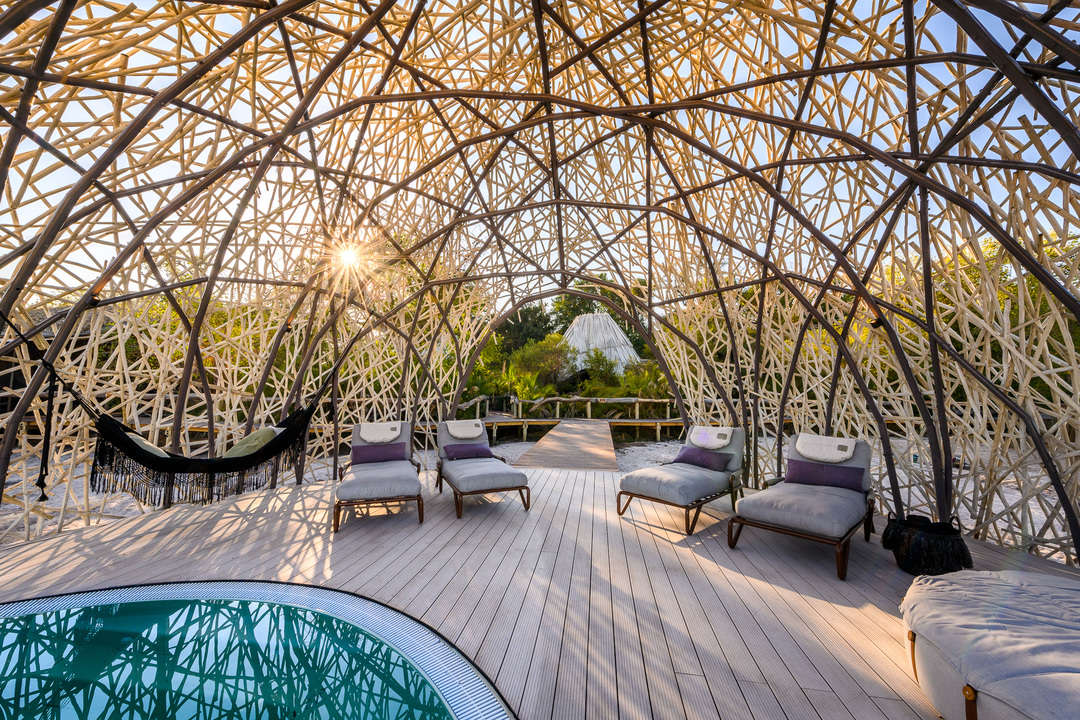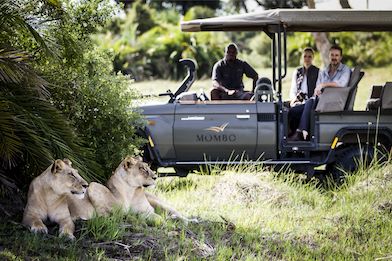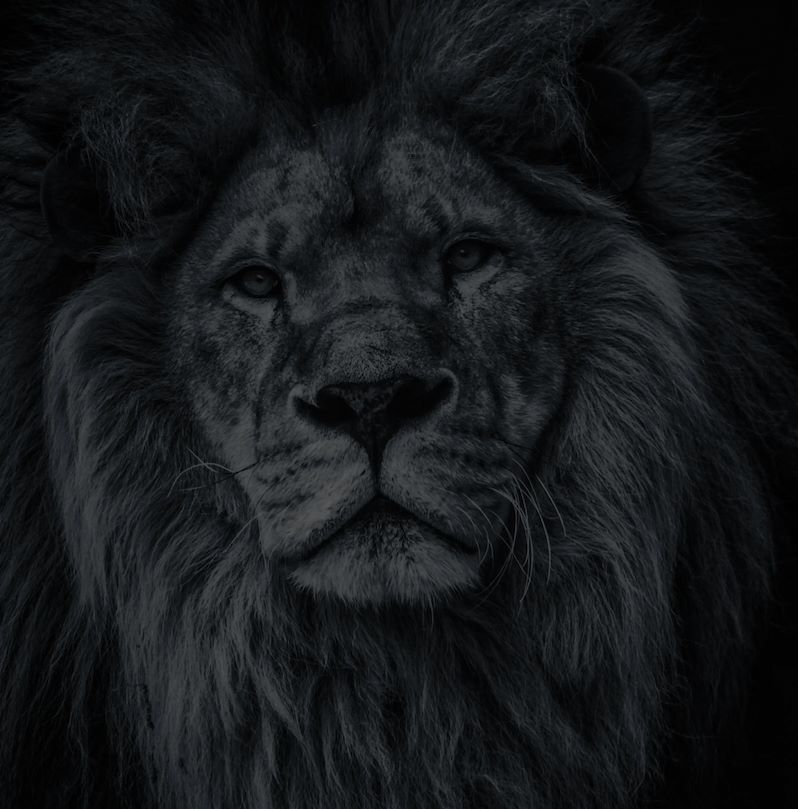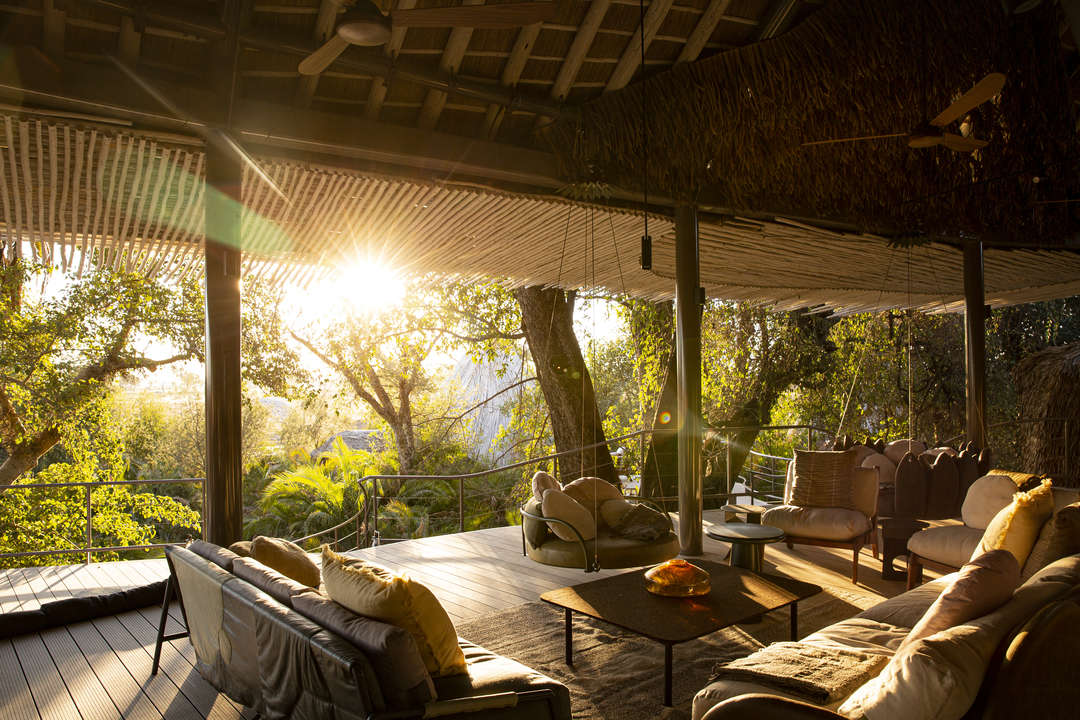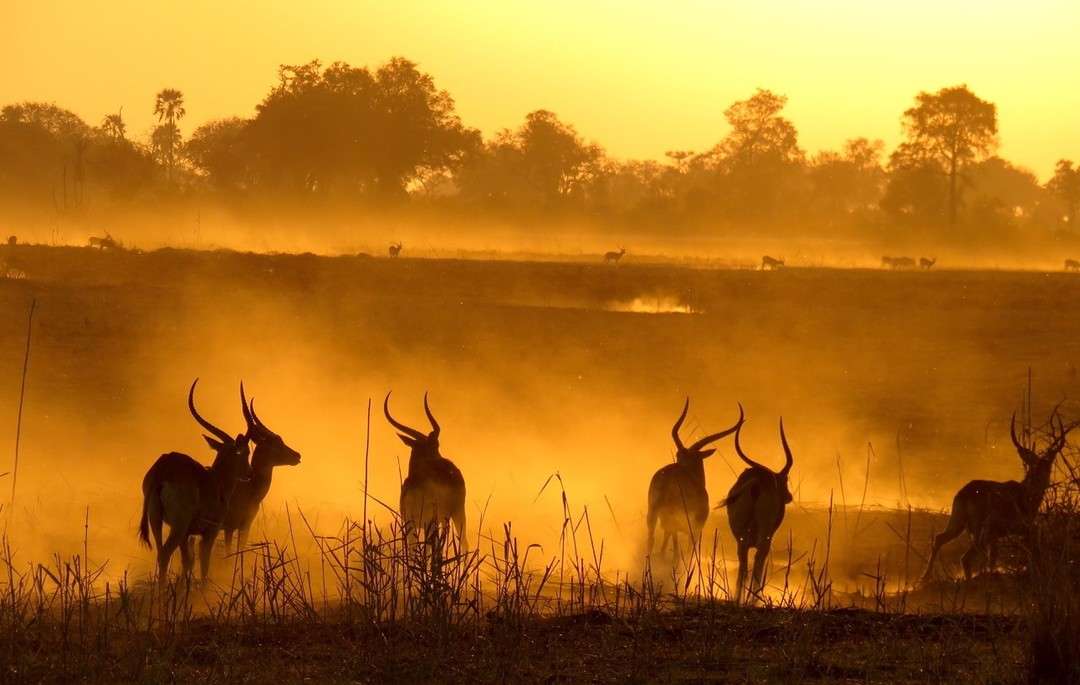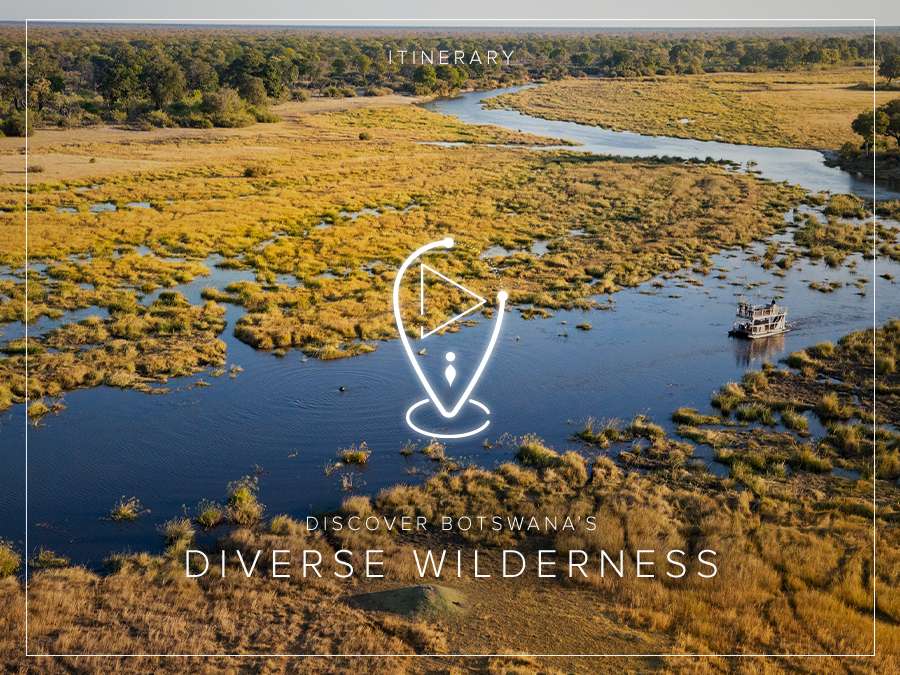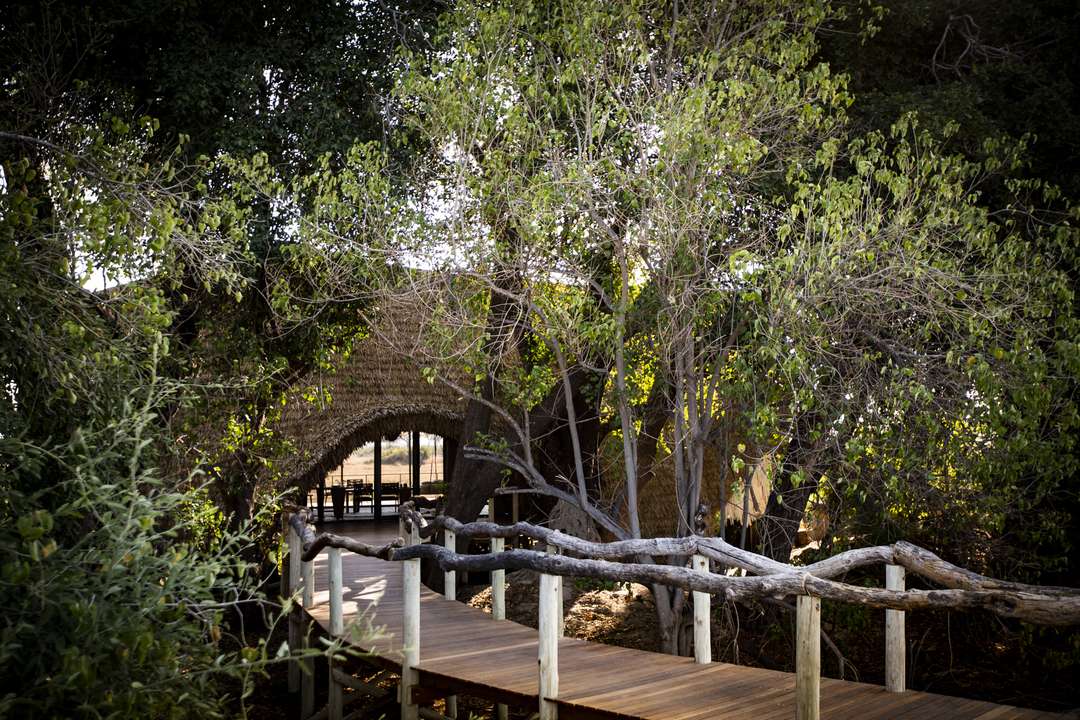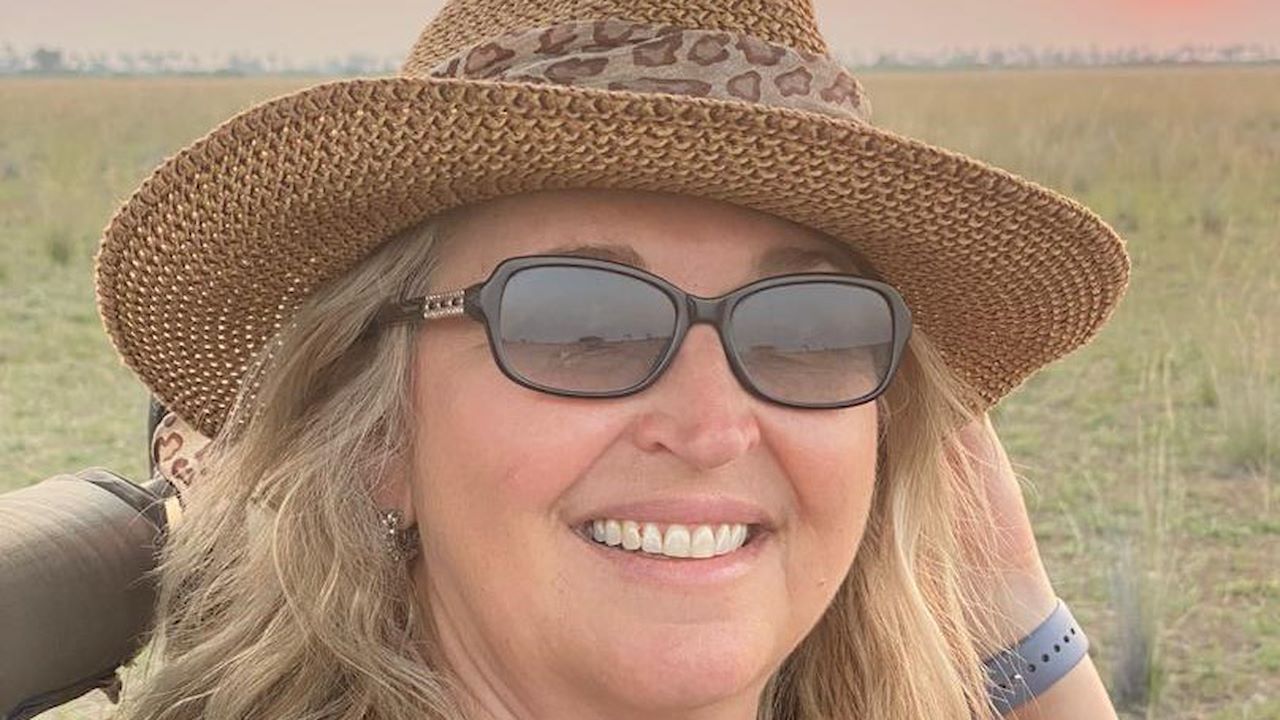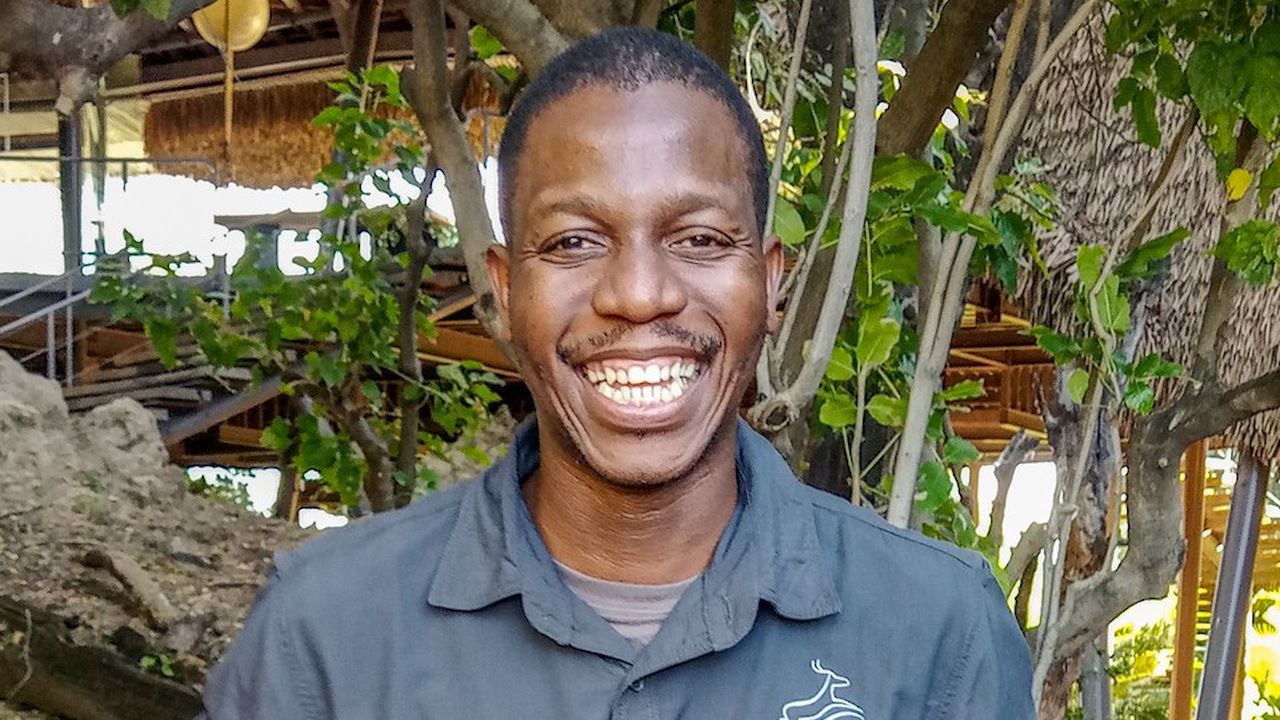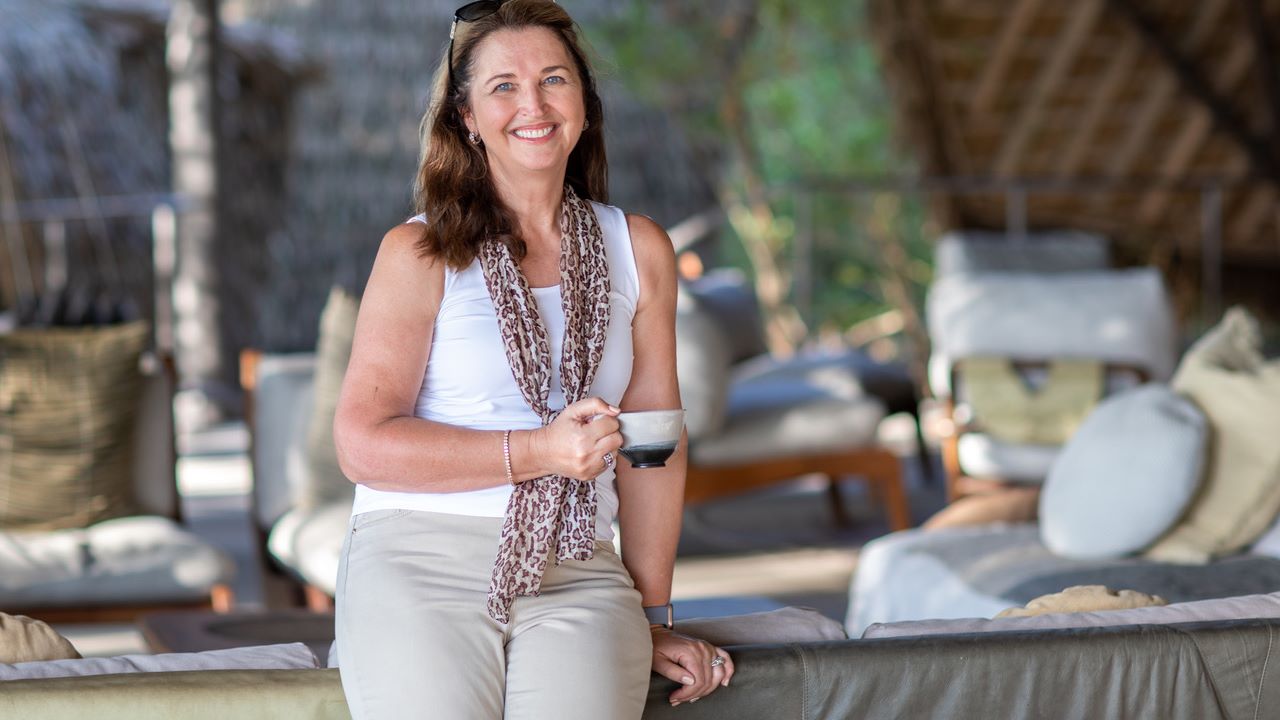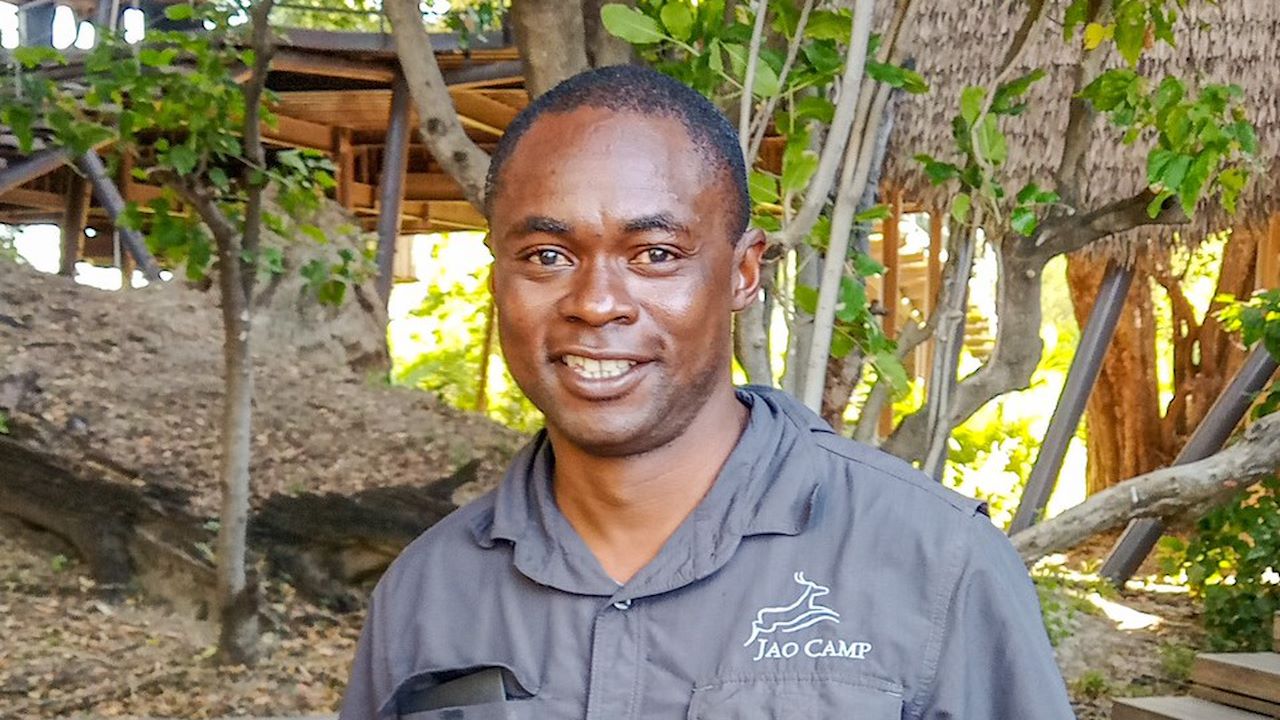(Kgosi) Jao for me is the people! The love and the passion that everyone working here has for their job and being here. You must have a love for the wilderness to do what we do, and everyone here has it, and you can see it. The team has unrivalled connection and mutual support. Like any other family we have our days, but we get through them and keep getting stronger – we often laugh through it together.
Adventures/Activities
(Cathy) We offer mokoro trips, fishing, and boating in the wet areas and walking and game drives on dry land. Some years up to 85% of the Jao Reserve can be inundated, but we have great logistics worked out to get guests to the prime game-driving areas in between the water activities. Guests love going on the mekoro, such a peaceful, serene experience and the perfect time for noticing the smaller creatures and the magnificent flora. Highlights for many guests are Jao’s wonderful bush setups, be it an outdoor breakfast facing a hippo-filled lagoon at dawn; brunch with tables set in the shallows of the lechwe-dotted floodplain, with clear water and white sand enveloping your feet; a bush picnic on Hunda Island amongst a zebra herd; a sundowner setup or gin stop that brings the lounge into the bush; or a magnificent bush dinner set under starry skies, a mesmerising fire as the focal point.

Design/Décor
(Cathy) Jao is a place of wonder with beautifully designed buildings that fit into the landscape. The ‘new’ Jao is a major departure from the old camp with its thatch and hand-crafted woodwork. This is a far more sustainable camp, making use of the opposite spectrum of building materials, with steel and recycled plastic. It was quite terrifying, but watching the rebuild come to life was tremendously fulfilling. Jao is a very personal place for me; so much of our love and energy have been invested there. We’ve shared a lot of our history in the Jao museum.
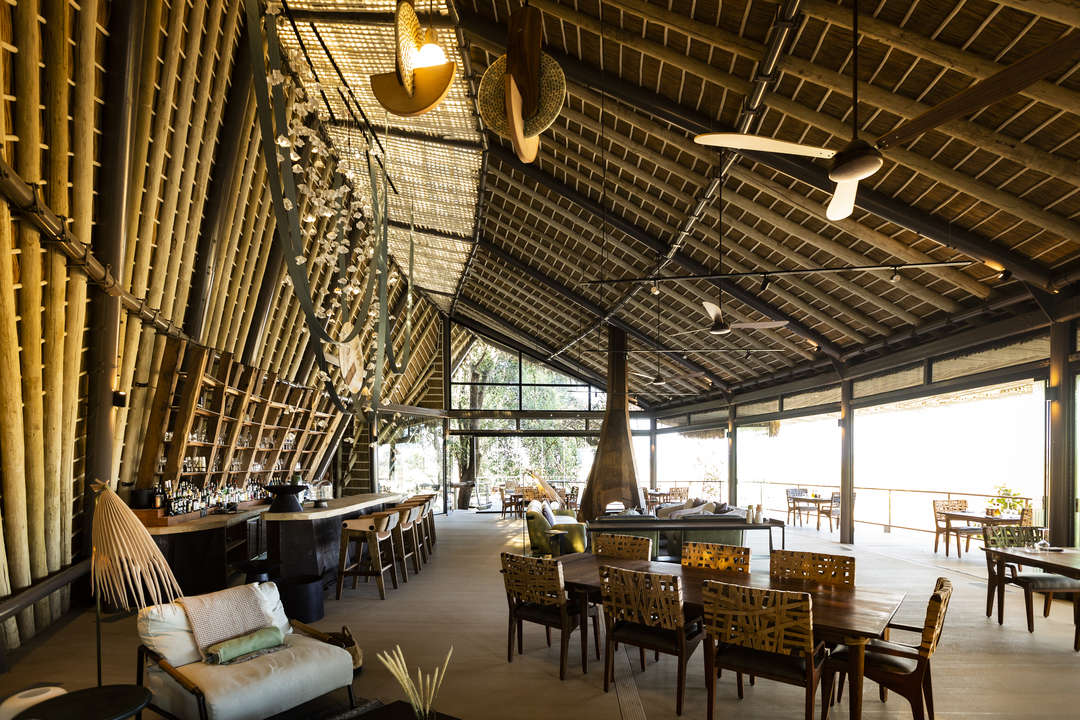
The furnishings are hand-crafted and designed especially for Jao, so everything is unique. Elements of my childhood reflect in the sandstone slabs which come from my home town and are used as coffee tables, vanities, and kitchen counters throughout the camp. The rooms are open plan with high-pitched roofs, creating volumes of space, and glass or metal gauze aluminium doors opening out to the magnificent floodplains.
The main area has the same height off the ground as the original Jao main area had, but it is larger and designed around the trees. This area has an indoor lounge and dining area which can be opened up to the elements with its tall glass stacking and folding doors, or sealed off against the cold in winter or bugs in summer. The main feature of this area is the impressive bar with its cedar counter over an angular iron base, with a backdrop of leadwood uprights holding glass shelves. Above the bar hang hand-thrown, ceramic lily-like lights in a mass display offset with water-coloured strapping and a large ceramic leaf-imprinted disc. The stately iron fireplace set on a sandstone slab creates a cosy ambiance on cold winter nights. Adjacent to this and under the same roof structure is the outdoor lounge area, with separate private eating decks set amongst the trees.
Alongside the main area two oval shaped towers house the kitchen and the gallery/museum. There you’ll find many curiosities under glass, the library, a wine cellar, and a striking giraffe skeleton.
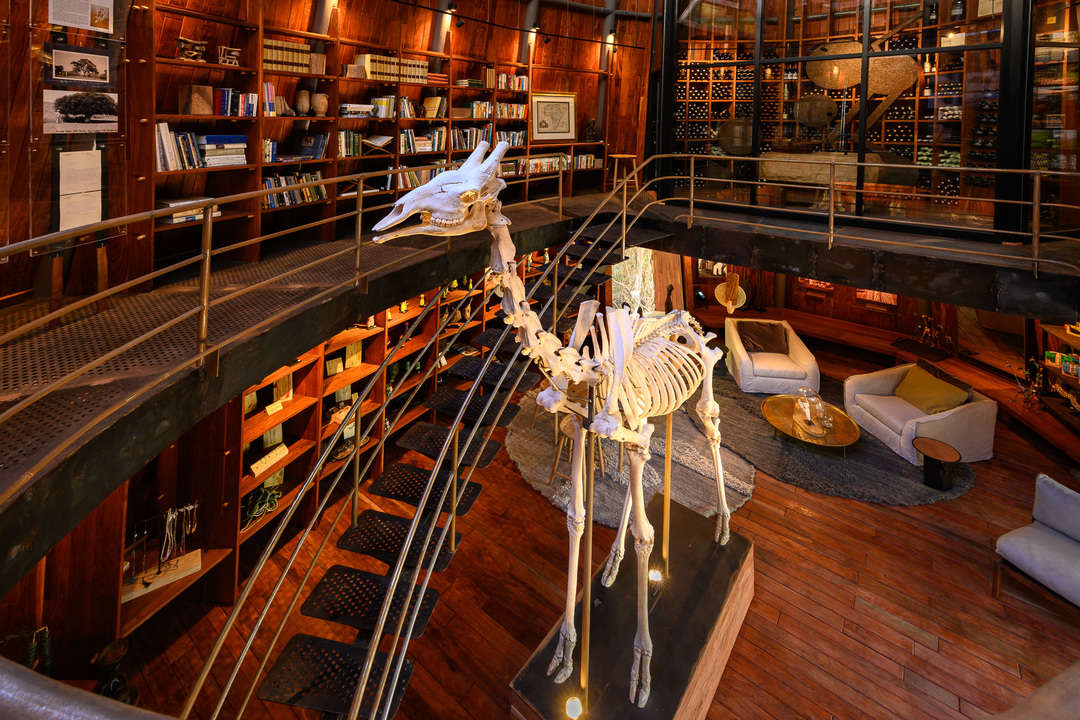
Dining
(Cindy) Dining at Jao is an experience in itself, and in essence is the spirit of the Delta, simplicity made special. We offer dining in each guest room, and if staying in one of the two villas, you can have your own private chef come to your room and make your dinner for you. We can also do meals in the bush – and whether you are eating brunch with the water lapping around your ankles, or on drier land with the roar of the lions in the distance, you will hold the experience for the rest of your life.
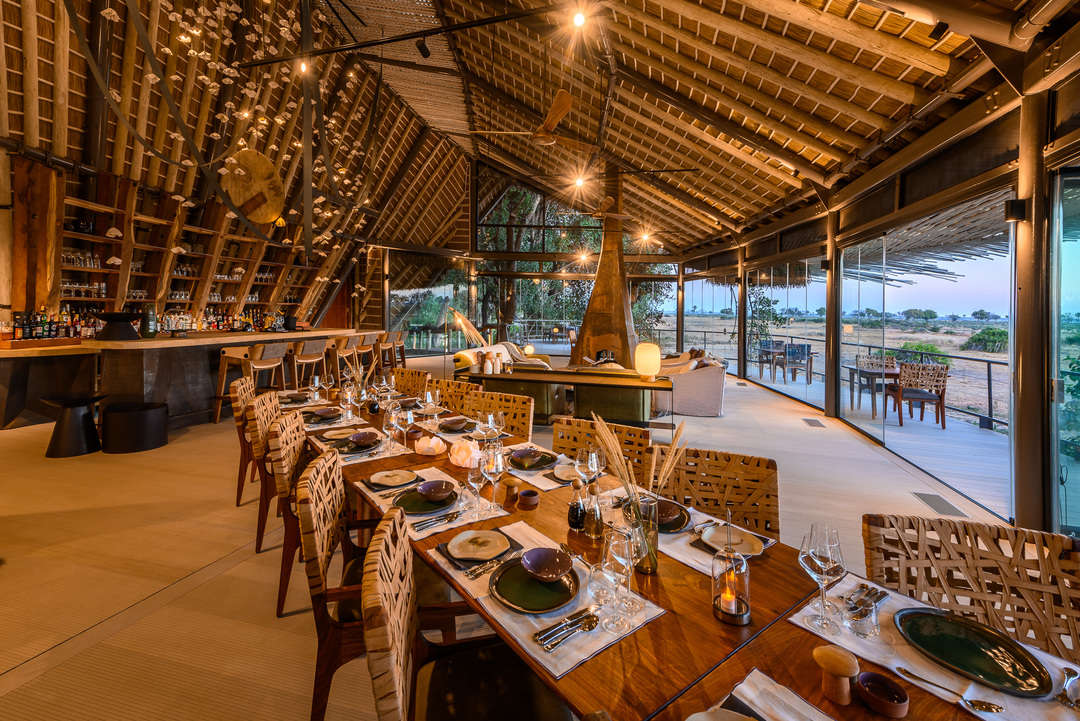
The Seasons
(Cathy) I honestly cannot pick a favourite season; each season is so different and brings its own pleasures. Spring is short lived, as we seem to move quickly from winter into summer, but I would define spring as being mostly hot and dry. The water has mostly dried up on the plains, leaving the channels and the permanent water to the east with water, which attracts the animals into a more concentrated area. Large flocks of wattled crane gather on the floodplains, and the lechwe herds move out to the water in the day, then trek back to the dry floodplains at night, preferring the openness for safety. The elephants concentrate in big herds and the buffalo gather.

With summer comes the rain. Dramatic thunderstorms build up while the humidity intensifies, and then the falling rain brings sublime relief. Summer also is the baby season, with most antelope, wildebeest, zebra, and buffalo giving birth during this time. The grass becomes lush and green, providing plenty of food for the grazers, which in turn provide plenty of food for the predators. Now that the pans are filled with rainwater, the elephants move out to the drier areas in the west so that they can enjoy a different diet of mopane trees.
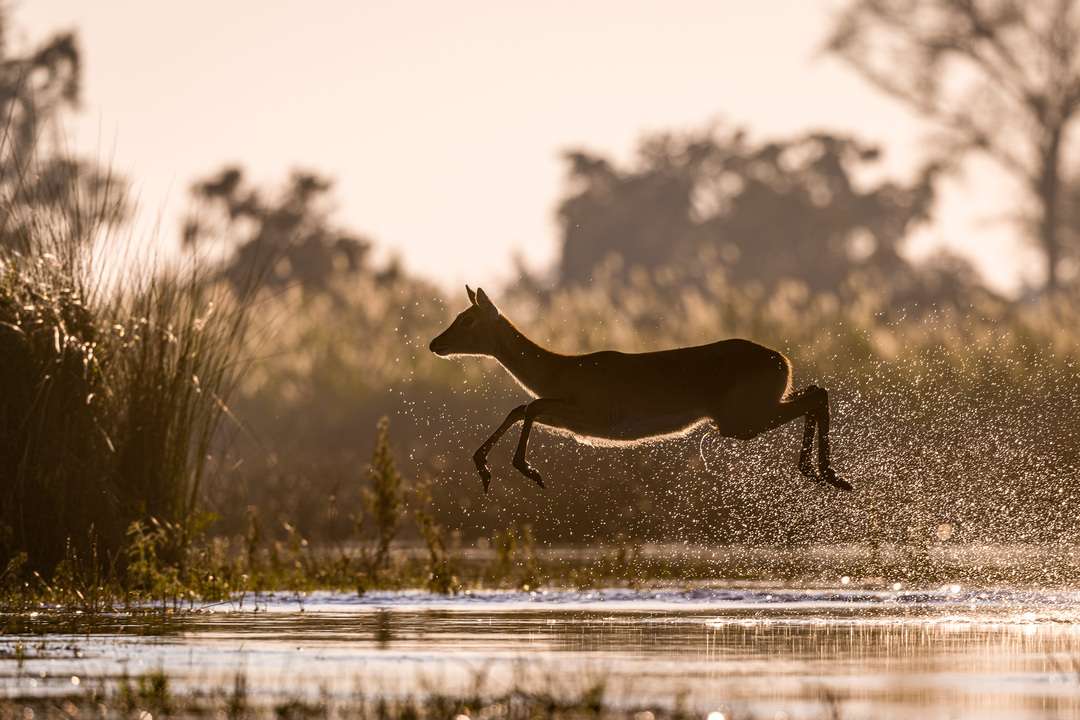
Autumn brings the floodwater, which has travelled down from Angola. The floodplains fill up with water and everything remains lush and green for a few months longer. With the water come large herds of lechwe, filling the Jao plains and providing easy pickings for the local predators. The crocodiles may move onto the floodplains and become more visible, and we often have the rare sitatunga on Jao Island. The channels are filled with pristine water, so clear that you can see the water lilies’ twirling stems beneath the surface. The elephant herds now return.
Winter brings cold crisp mornings, occasionally with mist. The water levels are usually at their highest, so water activities like mokoro trips and boating are a highlight. This is the perfect time of year to take a boat cruise to Hunda Island in the west, to spend a day there exploring the drier regions with the animals on offer, and enjoying a picnic along the way. I never tire of the place.
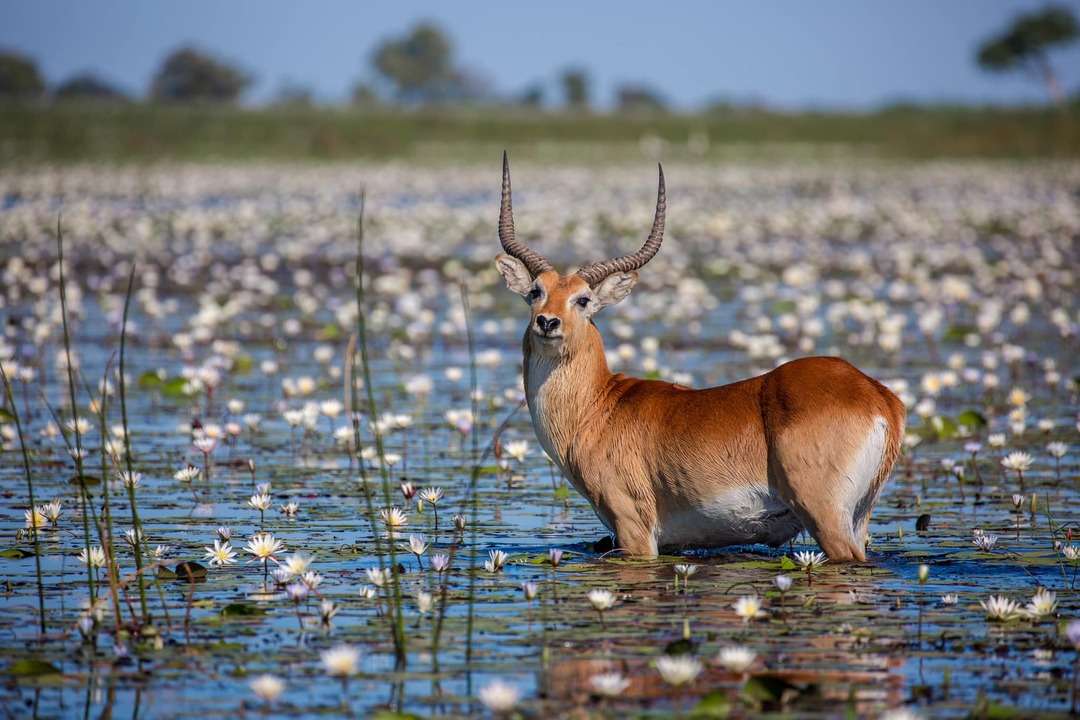
Special Spots
(Kgosi) So many options, I don’t even know where to start. Jao has a stunning view no matter where you are. But I must say I have a soft spot in camp for the fire area downstairs closest to the main pool. It is a perfect place to sit in the evening with a fire going, having a good chat and watching the sun go down, with its reflection in the water.
(Martin) The Jao floodplains for the view and great sunsets. The waterways around Jacana, which I believe is one of the best places to mokoro and boat in the Okavango Delta. Then there’s the baobab trees we have around the reserve. Harry’s Baobab is the largest and is awesome to see up close.
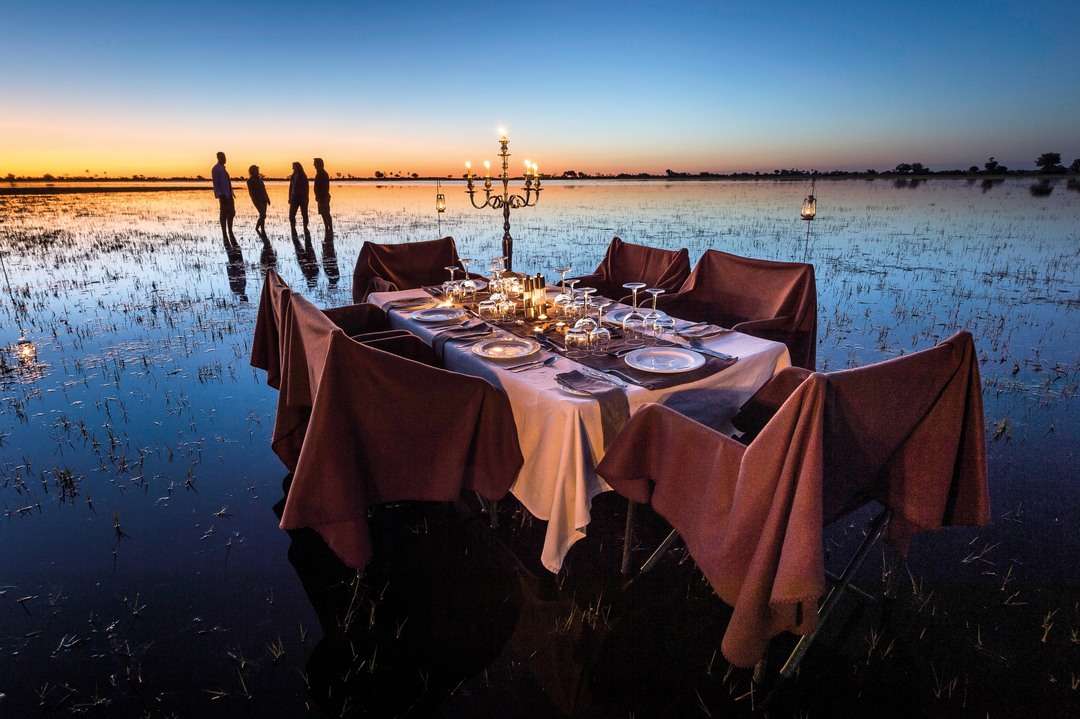
The Takeaways
(Kgosi) From the moment guests arrive in camp, it is my goal to make them feel free and to know that this is their home and that they have nothing to worry about during their stay. So ultimately that is what I want them to take away with them: the idea that Jao is their home, and home is a place you always want to go back to no matter where you are in the world. Once Jao is your home, you will ultimately return – it might not be tomorrow, but you will come back.
Written by Melissa Siebert
